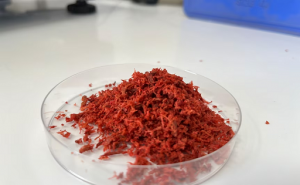
As I look at grain market actions over the last week, I am struck with the idea that some things don’t add up. My opinions have been formed by decades of belief that the regular U.S. Department of Agriculture reports, especially the Crop Production and World Agricultural Supply and Demand Estimates, are the foundation of fundamental market analysis and that the fundamentals are the estimated supply and demand in our country and in the world.
More and more it seems like market analysis is based upon analyzing the USDA numbers and arguing why they are not right. The assumption used to be that the USDA was right, and the market traded the new numbers when a report came out, at least for a day or two until there were enough traders who poked real or imagined holes in the numbers to support views alternate to the government. Maybe that is where we are right now.
Differing interpretations
I say all of this after reading conflicting opinions about the future of our grain markets that I am having trouble reconciling. In the last day, I have read two important articles online that don’t coincide at all. In one, all of the arguments are made for how the market corrected Oct. 28 because the abundant harvest volume overwhelmed the argument that export demand was using up corn faster than expected. In another article, I read all of the reasons why export demand is the secret sauce that is flavoring a bullish market potential. In other words, we have two different writers opining conflicting conclusions about the same set of facts.
The case for continued doom and gloom, which has been confirmed by market action for the last several months, is that we have grown a huge crop, and it is mostly in the bin with few problems and much earlier than normal. The bullish case has to do with the idea that the crops are worse in the exporting countries we compete with and worse than USDA is saying in their published reports.
Let’s unpack that a little. First, it is apparent that the USDA has a tendency to be slow to cut the estimates of crop size, whether in the U.S. or in other countries. It is said that one reason for that is that they don’t want to be seen to be playing God with the markets.
For example, if our crops are suffering drought, they are slow to reduce crop production estimates because they never want to be in the position of lowering an estimate and then raising it in a later month. The farmers scream that they just did it to manipulate the market.
So, if they think the crop may be short a half-billion bushels, they take 100,000 bushels off the estimate and then plan further adjustments in a later report if they think they really need to. The objective seems to be to be accurate by the time harvest is near and they can actually count bushels better.
Bullish
The bullish advocates say that the South American crops and corn crops in Ukraine, Russia and France are all going to be smaller than USDA’s current published estimates. Couple that with changes in corn exports from the major exporters and add in the fact that we have not seen much corn business from China, and a case is made that the supply is not as great as the demand. I saw writing today that suggested we would be importing corn in the late summer next year.
There are good bullish arguments. I hope they are not just wishful thinking. First, some have the idea that the U.S. will go back to being the world’s number one corn exporter this year. It may not occur to you that we are not number one now. That ship sailed a couple of years ago, when Brazil passed us, just a few years after they passed us in exporting soybeans. Yes, we still grow an unimaginable lot, but we do not export as much as Brazil, either in corn or soybeans.
The argument makes some sense if you realize that our exports are already a third larger than at this time last year. A week ago, I was seeing articles about bull spreads, which suggested that we had demand issues that were outstretching our supply. Maybe they were right, if our farmers are storing all they can because of low prices, and importers are looking to buy record amounts of corn at bargain prices. Maybe commercial interests are looking to get corn booked at the prices that farmers see as being below the cost of production.
Maybe the bullish answer is on the supply side. We normally max out our corn exports as we get late in harvest. The farm bins are full, the corn goes to town, the town bins get emptied by loading barges on the Illinois and Mississippi Rivers and the corn goes downstream to New Orleans and export destinations. Now comes the argument, are the exports large because the crop is large, or are exports large because of demand, especially at this price?
Foreign supplies
Adding to the idea that the leading export countries may get mixed around is the thought that the French crop of corn (they are number five in exports) was hurt by too much rain, which hurt production and caused quality problems. The Ukraine crop is now said by many to be small. Blame this on drought and war-related problems. It is possible that the number four exporter may only export half of what used to be normal.
I don’t know how you could farm in Ukraine, so I can believe anything. If they grow it, can they get it to town? Can they get it out the Black Sea without an export facility being blown up or without the Russians interfering with the salt water vessels? The Russian crop is said to be much reduced by drought. The Argentines did not get the acres planted. The Brazilians are seeing much higher domestic demand.
Now look at the supply side. We had a dry finish to the growing year, and a harvest that has stayed dry. According to USDA, as of the evening of Oct. 27, Ohio farmers had harvested 72% of the corn instead of a normal 38%. The U.S. as a whole had taken off 81% of the corn, up from a normal 64%. Ninety percent of the Ohio soybean acres have been cut instead of the normal 64%, and 89% of the nation’s soybeans were off instead of the normal 78%.
Everything seems to point to big crops, except, of course, the fact of dry weather.
As I write this, we are still in October, and the harvest is winding down. I remember when we took a couple of hours off for Thanksgiving lunch, then put the Carhartts back on and went out to pick corn. Not this year.
You can now read the most important #news on #eDairyNews #Whatsapp channels!!!
🇺🇸 eDairy News INGLÊS: https://whatsapp.com/channel/0029VaKsjzGDTkJyIN6hcP1K



















